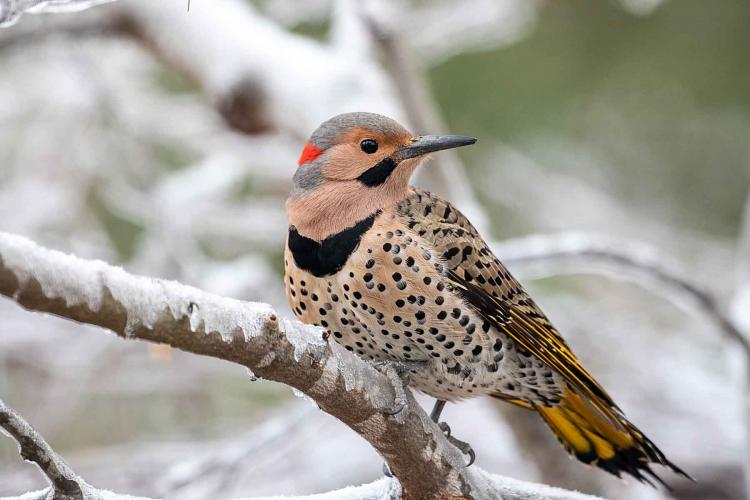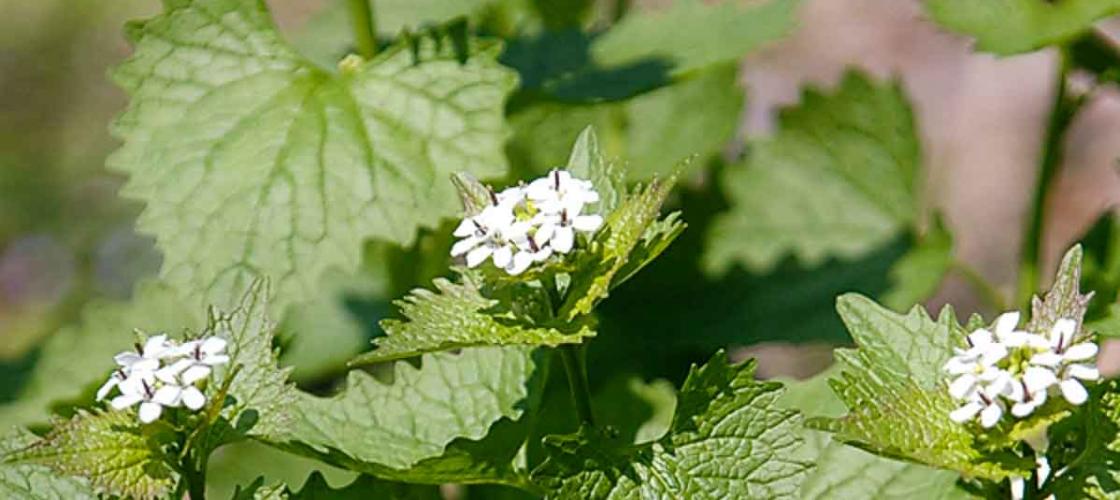MDC Expands Bicycle Use on Many Conservation Areas
Beginning Feb. 28, MDC will allow the use of bicycles and electric bicycles on many department area service roads and multi-use trails
Bicycle use on our approximately 1,100 conservation areas is currently restricted to roads open to public vehicle traffic and some multi-use trails. Bicycle use is currently not allowed on conservation area service roads.
Service roads are non-public roads on MDC areas used by staff to conduct resource management activities. They are marked on online maps on the MDC website at short.mdc.mo.gov/Z9o. Visitors use many service roads as walking paths, but the conditions of service roads on department areas vary and are not maintained at the level of public-use trails and public roads.
Most MDC conservation areas do not have applicable service roads or multi-use trails. The regulation change affects approximately 300 MDC areas. Approximately 30 of these areas will be closed to bicycle and electric bicycle use during all portions of the firearms deer hunting season and the spring turkey hunting seasons.
Exceptions would also include service roads used by staff at fish hatcheries and other heavily used MDC areas or where bicycle use could cause damage to sensitive habitats, such as designated natural areas.
MDC defines electric bicycles as “any two-wheeled or three-wheeled device equipped with fully operable pedals, a saddle or seat for the rider, and an electric motor not more than 750 watts.”
Bicyclists are expected to follow appropriate trail etiquette including yielding to pedestrians and horseback riders, maintaining a safe speed, staying on designated trails or service roads, and avoiding damaging trails by not riding in wet conditions.
Find MDC conservation areas and other MDC Places to Go online at short.mdc.mo.gov/Z9o.
Get Hooked on Missouri Trout Fishing
March 1 marks the annual opening of catch-and-keep trout fishing in Missouri at the state’s four trout parks: Bennett Spring State Park near Lebanon, Montauk State Park near Licking, Roaring River State Park near Cassville, and Maramec Spring Park near St. James. The catch-and-keep season at the trout parks runs through Oct. 31.
MDC operates trout hatcheries at all four parks and stocks rainbow trout daily throughout the season.
Trout anglers need a daily trout tag to fish in Missouri’s trout parks. Daily trout tags can only be purchased at each of the four trout parks. Missouri residents 16 through 64 and nonresidents 16 and older also need a fishing permit in addition to the daily tag.
The cost of a daily trout tag to fish at three of Missouri’s four trout parks — Bennett Spring State Park, Montauk State Park, and Roaring River State Park — is $4 for adults and $3 for those 15 and younger. A daily fishing permit for Missouri residents is $7 and $8 for nonresidents. The daily limit is four trout.
At Maramec Spring Park, the daily limit is five trout and the cost of a daily trout tag for adults is $5 and $3 for anglers 15 and younger.
Trout hatcheries are just one way that conservation pays in Missouri. MDC staff stock more than 800,000 trout annually at the state’s four trout parks and approximately 1.5 million trout annually statewide. Trout anglers spend more than $100 million each year in the Show-Me State, which generates more than $180 million in business activity, supports more than 2,300 jobs, and creates more than $70 million dollars in wages. About 30 percent of Missouri trout anglers come from other states, so a substantial portion of trout fishing expenditures is “new money” for the state’s economy.
Missouri also offers excellent trout fishing throughout the state on rivers and streams that support naturally reproducing trout. For more information on trout fishing in Missouri, visit short.mdc.mo.gov/Zvy.
Buy Missouri fishing permits from numerous vendors around the state, online at mdc.mo.gov/buypermits, or through MDC’s free mobile app, MO Fishing, available for download through Google Play for Android devices or the App Store for Apple devices.
Buy Your 2022 Hunting and Fishing Permits
Annual hunting and fishing permits expire at the end of February, including 2021 permits for small game, fishing, trout fishing, and combination hunting and fishing.
Buy Missouri hunting and fishing permits from one of many vendors around the state, online at mdc.mo.gov/buypermits, or through MDC’s free mobile apps, MO Hunting and MO Fishing, available for download through Google Play for Android devices or the App Store for Apple devices.
Save time by buying hunting and fishing permits for multiple people in a single transaction. Select the Additional Customer option during the permit purchase.
Try our online permit auto-renewal service to automatically renew your permits prior to the start of the next season or permit year so you never have an expired permit when you need it most. Enrollment in auto-renewal can be done during an online permit purchase or by using the Manage Your Account feature.
Commercial and lifetime permits can be purchased only through the MDC Permit Services Unit by calling 573-522-0107 for an application.
Deer and Turkey Dates for Upcoming Seasons
2022 Spring and Fall Turkey Hunting Dates
- Spring Youth Portion: April 9–10
- Regular Spring Turkey Season: April 18–May 8
- Fall Firearms Turkey Season: Oct. 1–31
2022–2023 Archery Deer and Turkey Hunting Dates
- Sept. 15–Nov. 11 and Nov. 23–Jan. 15, 2023
2022–2023 Firearms Deer Hunting Dates
- Firearms Deer Early Youth Portion: Oct. 29–30
- Firearms Deer November Portion: Nov. 12–22
- Firearms Deer Late Youth Portion: Nov. 25–27
- Firearms Deer Antlerless Portion: Dec. 3–11
- Firearms Deer Alternative Methods Portion: Dec. 24–Jan. 3, 2023
Details on hunting regulations, harvest limits, allowed methods, required permits, and other related information will be available online and in MDC’s 2022 Spring Turkey Hunting Regulations and Information booklet and MDC’s 2022 Fall Deer & Turkey Hunting Regulations and Information booklet prior to the related seasons.
Learn more about turkey hunting in Missouri at short.mdc.mo.gov/Ztu.
Learn more about deer hunting in Missouri at short.mdc.mo.gov/ZvC.
Travis Phillips
Mississippi County
Conservation Agent
The Light Goose Conservation Order opens Feb. 7 in Missouri and goes through April 30. The purpose of the order is to control the population of “light geese,” which includes snow geese, blue geese, and Ross’s geese. These birds are overpopulated on their breeding ground (the tundra), and their large numbers are detrimental to themselves and other species there. Hunters are required to use nontoxic shot. There is no limit on harvested birds. It is illegal to harvest birds from a vehicle or public roadway or shoot across a public roadway. Remember to obtain the proper hunting permit and receive permission before hunting on private property. For more information on the Light Goose Conservation Order, visit short.mdc.mo.gov/4kc.
Invasive nonnative species destroy habitat and compete with native plants and animals. Please do what you can to control invasive species when you landscape, farm, hunt, fish, camp, or explore nature
Garlic Mustard
Garlic mustard (Alliaria petiolata), a biennial herb native to Europe and Asia, was first recorded in Long Island, NY, in 1868. It likely was used by settlers as food or medicine.
At 2–4 feet tall, garlic mustard is a rosette of green, roundish leaves with flowers clustered near the top and fruit pods near the bottom. When pods burst, small, black seeds are released. The small seed can be transported on vehicles, by animals, or on clothing and shoes. The seeds, which can float, can remain viable in the soil for five or more years.
Why It’s Bad
Garlic mustard is extremely invasive, taking over a forest floor and crowding out native plants. It thrives in full shade or sunlight. Because each plant disperses an abundance of seeds, garlic mustard can outcompete native vegetation for light, moisture, nutrients, soil, and space as it quickly colonizes an area. Garlic mustard is unpalatable to wildlife, resulting in overbrowsing of natives.
How to Control It
Pulling: For new infestations and small populations, hand pulling can be effective if done before seed dispersal.
Cutting: Cut the plant a few inches above the ground just after the flower stalks have elongated, but before the flowers have opened. Repeat each year until the seed bank is exhausted.
Applying Herbicides: A foliar spray of 2 percent glyphosate can be applied to individual plants in the fall or early spring when most native plants are dormant.
Burning: Annual prescribed burns in spring or fall can help eliminate the plant.




Northern Flicker
The adult northern flicker’s chest is adorned with distinctive, black-spotted feathers. These medium-sized birds, part of the woodpecker family, delight humans at bird feeding stations, particularly when suet is offered. Like most woodpeckers, flickers excavate nest cavities in trees, which benefit other species, like squirrels and owls, who depend on these cavities for their own nests. Their call is a sharp descending whistle, and their courtship vocalization, wicka-wicka-wicka-wicka, is similar to that of the pileated woodpecker.
And More...
This Issue's Staff
Editor - Angie Daly Morfeld
Associate Editor - Larry Archer
Photography Editor - Cliff White
Staff Writer - Kristie Hilgedick
Staff Writer - Joe Jerek
Staff Writer – Dianne Van Dien
Designer - Shawn Carey
Designer - Marci Porter
Photographer - Noppadol Paothong
Photographer - David Stonner
Circulation - Laura Scheuler























